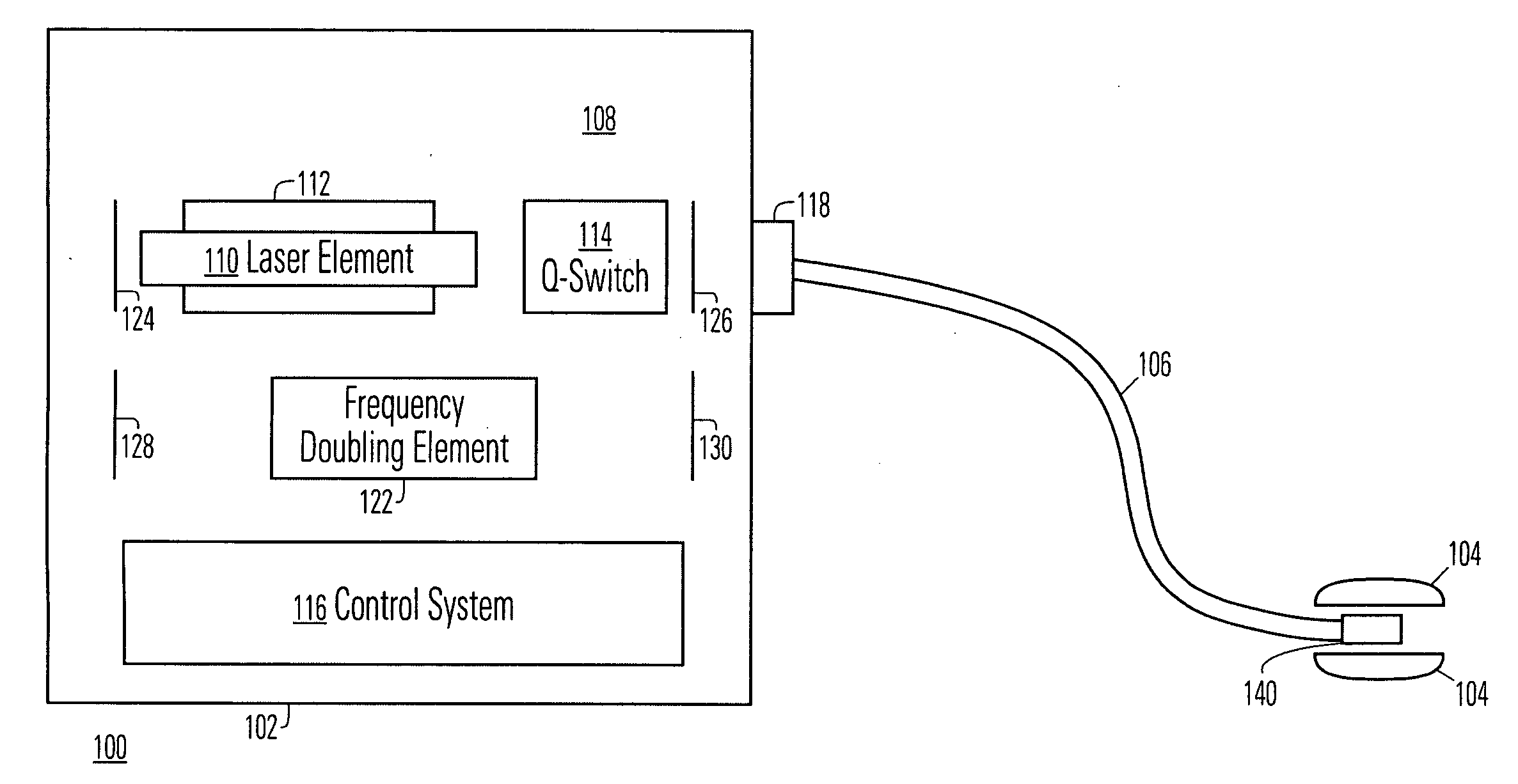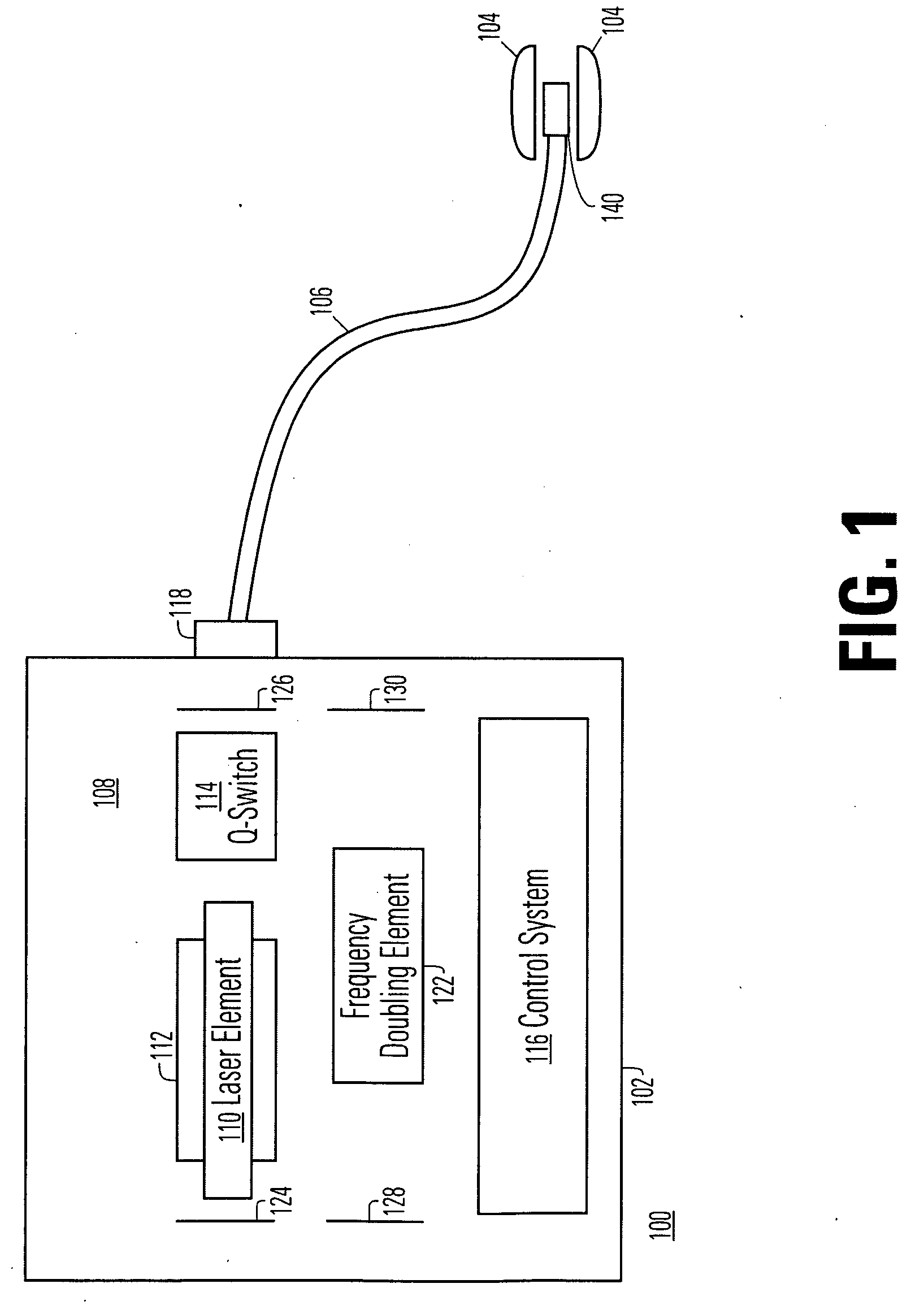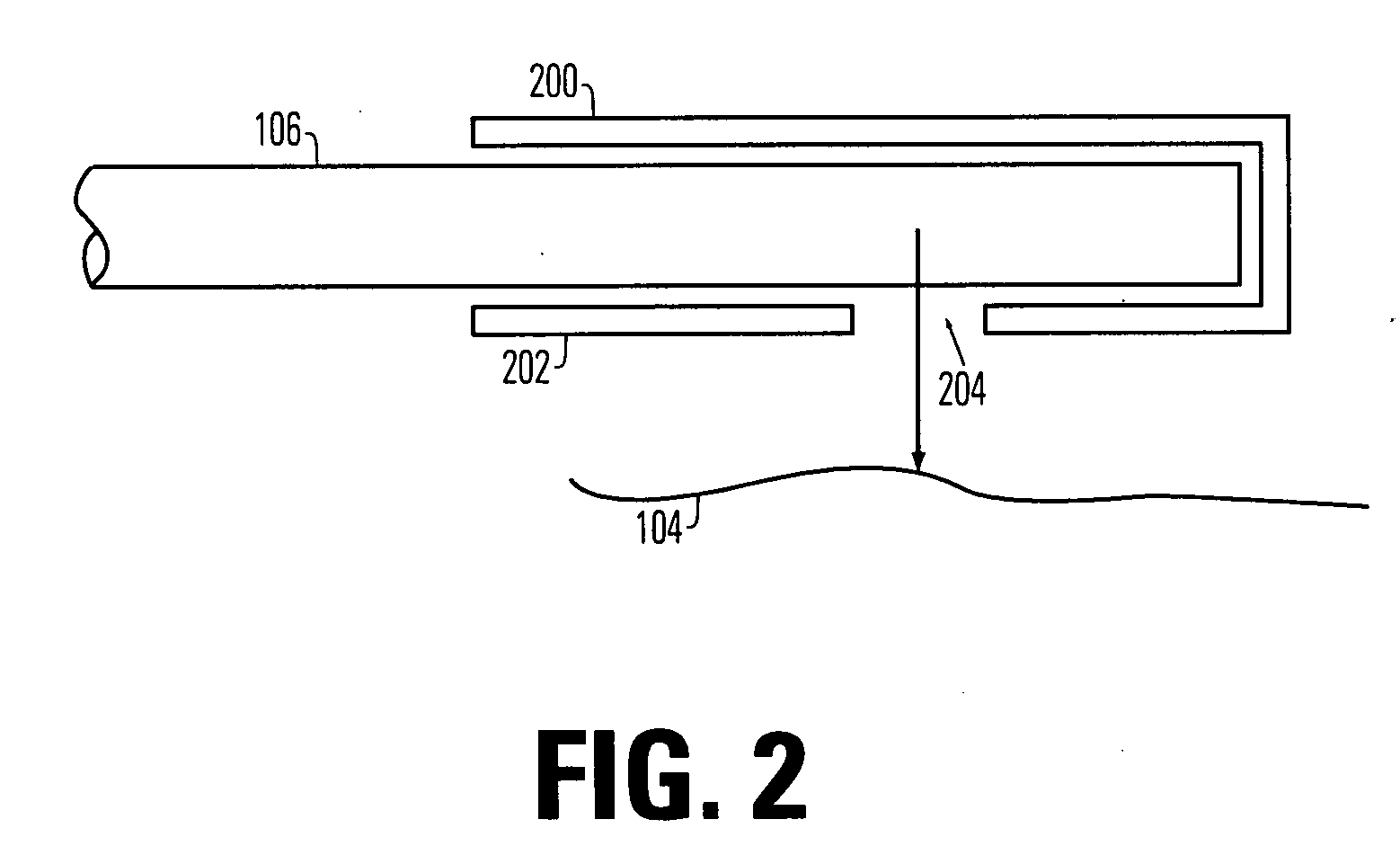Method and system for photoselective vaporization for gynecological treatments
a gynecological treatment and photoselective vaporization technology, applied in the field of laser treatment of tissue, can solve the problems of large residual layer of thermally denatured tissue several millimeters thick, large heat generation in the lasing element, and inefficient ablation, and achieve the effect of reducing the injury of residual tissue, and reducing the intensity of the puls
- Summary
- Abstract
- Description
- Claims
- Application Information
AI Technical Summary
Benefits of technology
Problems solved by technology
Method used
Image
Examples
Embodiment Construction
[0047]FIG. 1 is a block diagram depicting an exemplary laser system100 which may be employed for implementing the present invention. Laser system 100 includes a solid-state laser 102, which is used to generate laser light for delivery through optical fiber 106 to target tissue 104. As will be discussed in further detail herein below, laser 102 is capable of being operated in a “macro-pulsed” mode, wherein the laser light is emitted as macro-pulses having relatively long pulse durations.
[0048] Laser 102 more specifically comprises a laser element assembly 110, pump source 112, and frequency doubling crystal 122. In the preferred embodiment, laser element 110 outputs 1064 nm light which is focused into frequency doubling crystal 122 to create 532 nm light. According to one implementation, laser element assembly 110 may be neodymium doped YAG (Nd:YAG) crystal, which emits light having a wavelength of 1064 nm (infrared light) when excited by pump source 112. Laser element 110 may alter...
PUM
 Login to View More
Login to View More Abstract
Description
Claims
Application Information
 Login to View More
Login to View More - R&D
- Intellectual Property
- Life Sciences
- Materials
- Tech Scout
- Unparalleled Data Quality
- Higher Quality Content
- 60% Fewer Hallucinations
Browse by: Latest US Patents, China's latest patents, Technical Efficacy Thesaurus, Application Domain, Technology Topic, Popular Technical Reports.
© 2025 PatSnap. All rights reserved.Legal|Privacy policy|Modern Slavery Act Transparency Statement|Sitemap|About US| Contact US: help@patsnap.com



